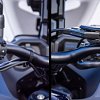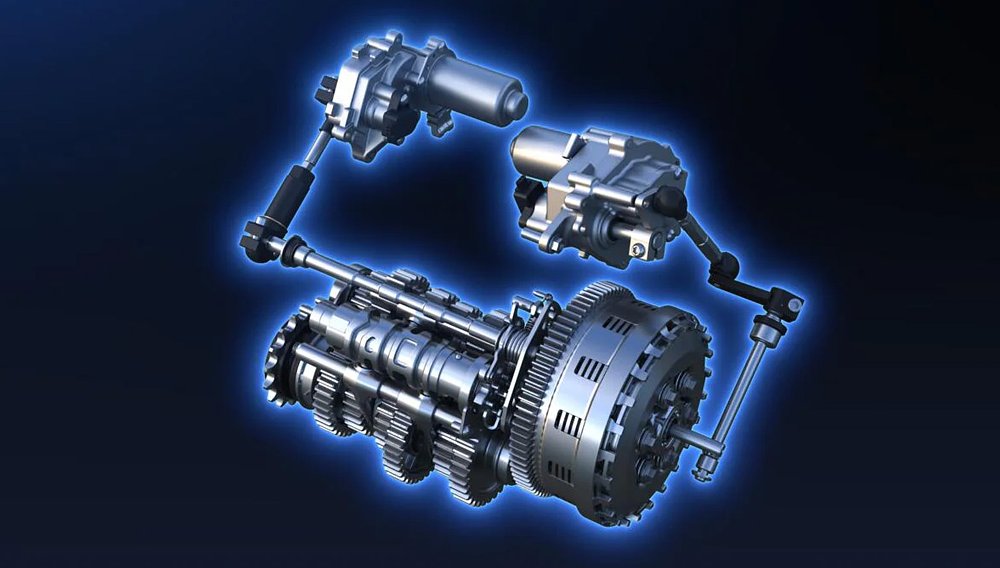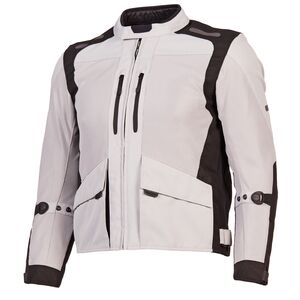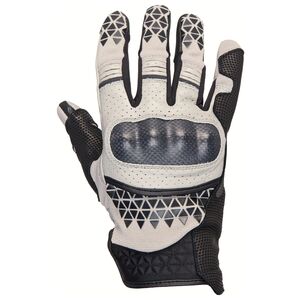When the NT1100 broke cover in 2021, it signalled a new sport-touring era for Honda. North American riders were clamoring for a VFR replacement. Tightening emissions regulations killed the VFR1200F in 2017, leaving American Honda without a proper sport-tourer for four long years. That’s why it was so deflating when the NT1100 launched as a European exclusive in 2022.
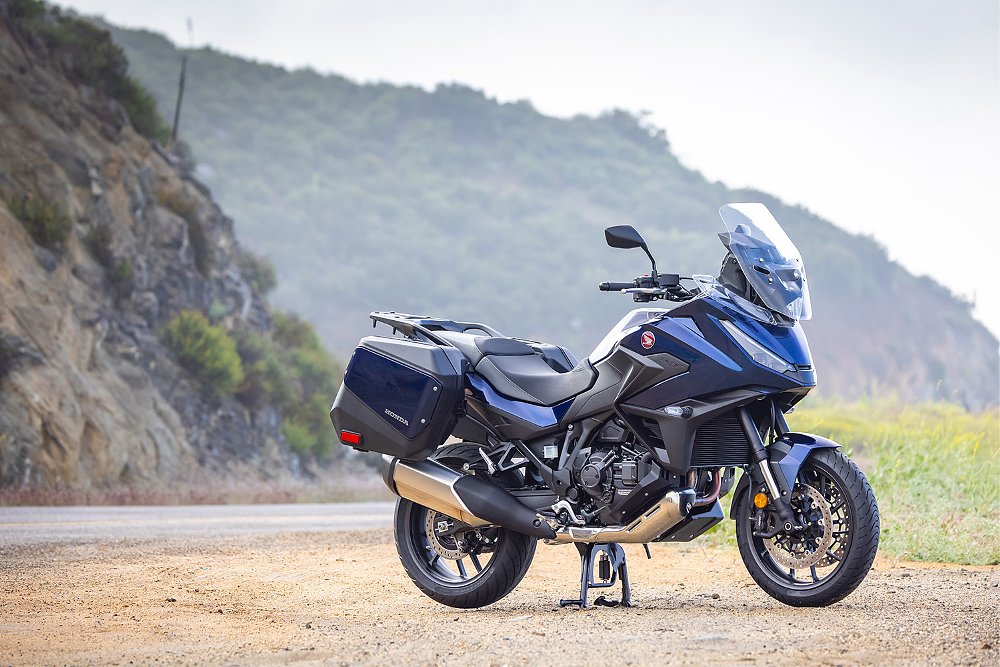
Success was swift, too. The model became the continent’s highest-selling sport-tourer in 2023. More than 12,000 NT1100s flew out of dealership doors in less than three years. The message was clear. Honda’s new sport-touring entry was a hit. With that sales record, it's no surprise Big Red finally sent the NT1100 stateside in 2025. What is surprising is the form in which the model arrives.
Decisions, decisions
“Why only in Europe back then? Why here in the States now?”
Those two questions surrounded the NT1100’s rollout. They're the same two questions I posed to Honda reps at the model’s U.S. press launch in Costa Mesa, California. The team wasn’t afraid to admit that they didn't “have the exact answer.” While “production schedules” were mentioned in the same sentence, “recovering” sales of "traditional sport-touring models" were referenced elsewhere in the presentation. It’s those circumstances that set the stage for the NT’s U.S. intro, but it didn’t cross the pond without a few changes in tow.
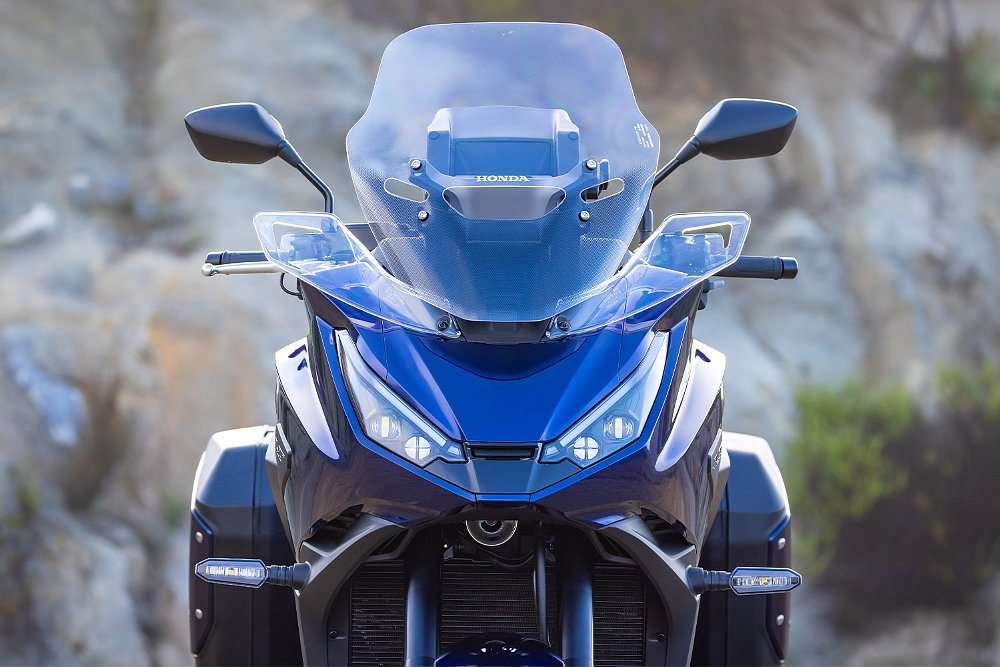
The U.S.-bound model isn’t the same NT1100 that debuted in Europe. The engine may still be a 1,084 cc parallel twin, but it comes with the updates first adopted by the 2024 Africa Twin. That includes a higher compression ratio (10.1:1 to 10.5:1), revised intake ports, adjusted valve timing, and a new exhaust. Transferring the engine’s horsepower and torque (unlisted) to the rear wheel is Honda’s Dual-Clutch Transmission (DCT). That’s an important distinction because it’s the only trim offered in the United States.
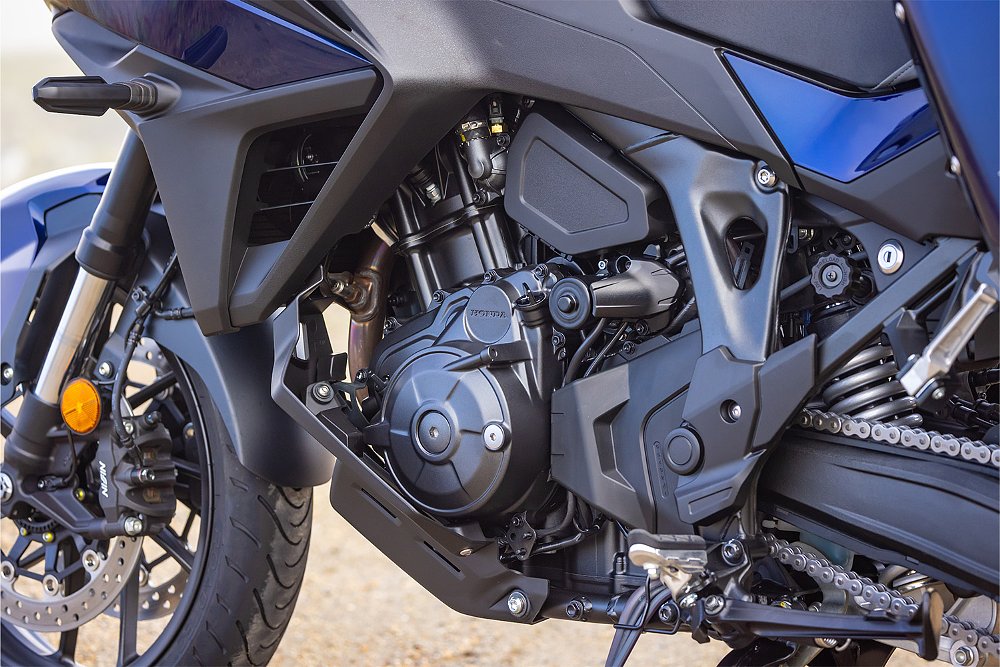
That scarcity of choice drew the disapproval of many Common Tread readers when American Honda announced the 2025 NT1100 DCT. Some called it a “deal killer.” Others deemed it “lame.” I was just as miffed. I’m neither anti-DCT nor anti-automatic transmission. I simply believe that consumers deserve options. At the same time, if Honda’s sales data has the final say, Common Tread commenters and I may be in the minority.
According to the OEM, DCT-equipped units account for around 70% of all Gold Wing, Africa Twin, and Rebel 1100T sales. Simply put, “DCT has been, especially in the States, the more popular option.” As Honda trickles the NT1100 into the U.S. market, offering the most sought-after variant is top priority. It’s a sound strategy, no matter how much I don’t like it. Honda may restrict customers to its automatic transmission, but the NT1100 presents ample options in other areas. Sometimes, to an overwhelming degree.
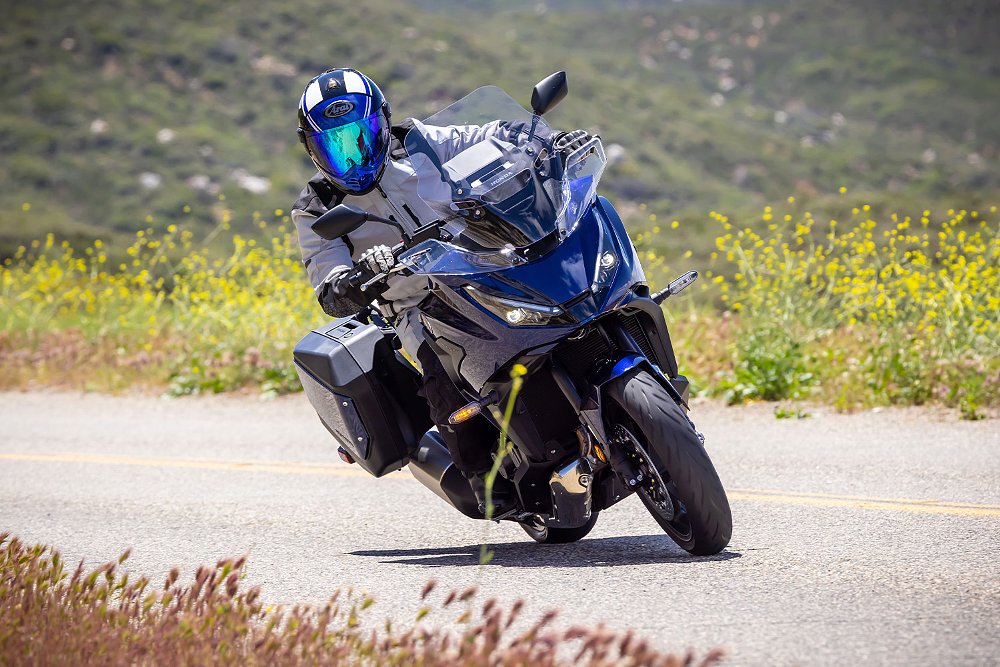
Spoiled for choice
Like the Africa Twin, the NT’s 6.5-inch TFT touchscreen comes integrated with Apple CarPlay and Android Auto. Simply connect your phone (via a USB cable) and the device’s UI mirrors onto the dash. Easy enough, right? Wrong. After plugging in my phone, the system asked whether I had a headset to pair, as well. When I answered in the negative, it aborted the process, full stop. No other options were offered. No alternative was available. It simply returned to the main display. I didn’t quit it as much as it quit me.
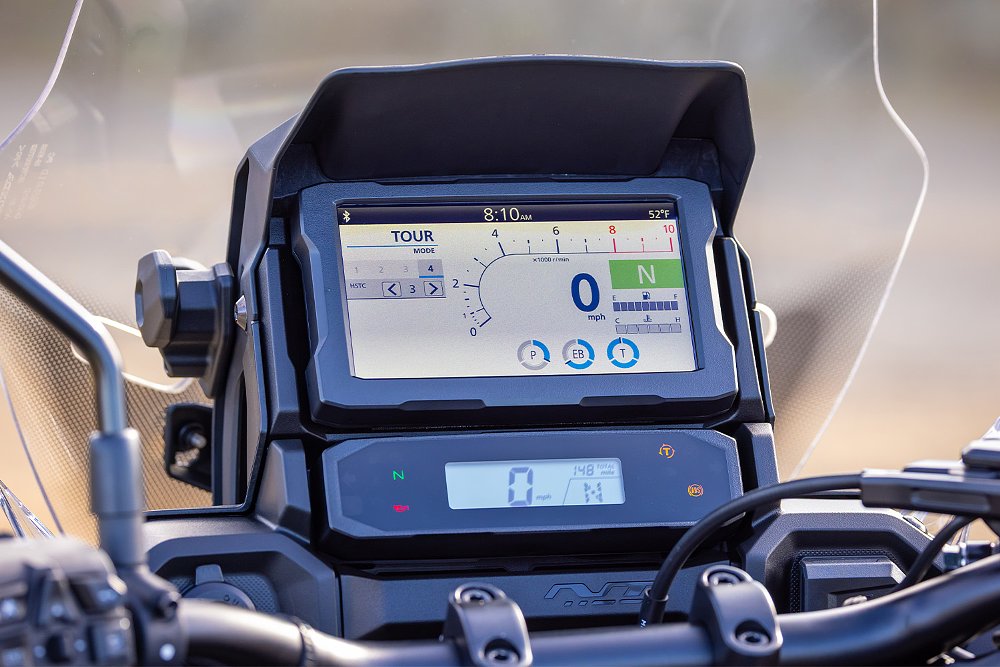
From my perspective, that’s not such a bad thing. I don’t particularly like mounting my phone on the handlebar anyway. I actually prefer not to. I find it nerve-wracking, especially if all I gain is a view of a map. However, the promise of Apple CarPlay and Android Auto changes that calculus. Even if I can’t listen to music or accept phone calls (without a comm unit), I’d still like to display the REVER app and see incoming text messages. I wasn’t disappointed by my CarPlay rejection. I was admittedly annoyed, though, and I wasn’t the only one.
Out of the seven riders in my group, only one successfully paired both their phone and headset to the NT. It wasn’t an easy feat, either. Syncing the devices required several attempts, after which the system dropped the connection later in the day. That’s when my colleague gave up the ghost and rode the rest of the day with the NT’s base UI, an interface that presents its own set of challenges.

Be forewarned, NT1100’s switchcubes go heavy on the buttons. There are 17 at the left handgrip alone. Add that to the right switchgear’s DCT controls, cruise control settings, function (Fn) button, and emergency brake lever, and you have the recipe for option overload. Some switches were dual-function. Others — like the next and previous playback buttons — weren't functional when the dash isn’t paired to a device. The cluttered controls often forced me to look down when making on-the-go adjustments, which repeatedly averted my eyes from the road.
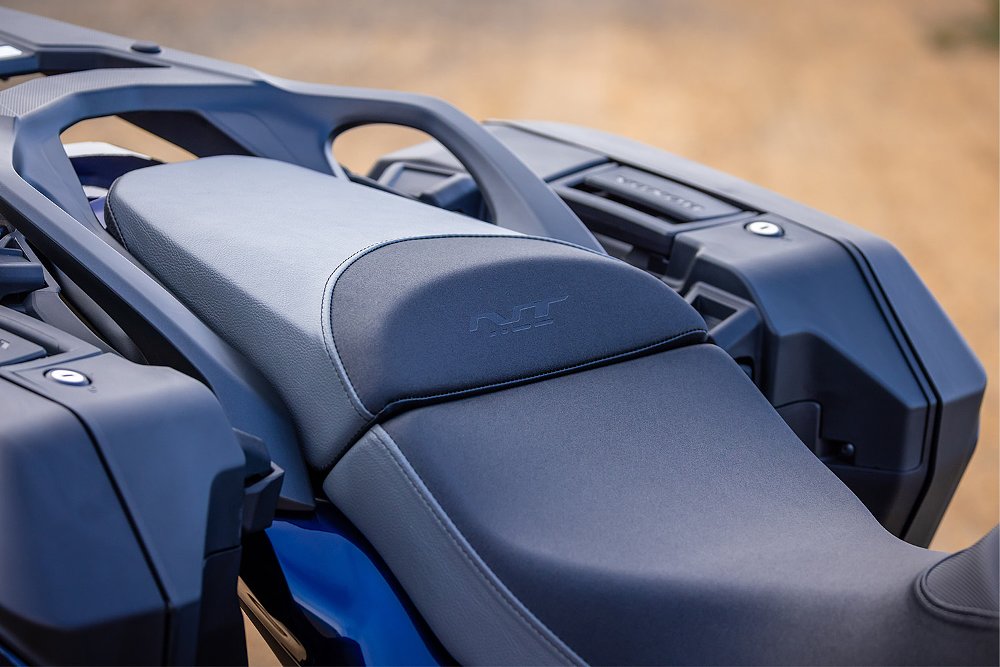
Excess isn’t limited to the switches, either. Not only are there three preset ride modes (Tour, Urban, and Rain) and two customizable ones (User 1 and User 2), but each mode comes with its own dash layout. Why? Just, why? As suggested by Ian of Big Rock Moto, I changed each ride mode to the display the Tour configuration. That added some much-needed continuity, all while retaining the pertinent readouts. (If you share similar frustrations with Honda dashes, see Ian’s full tutorial here.)
Everything from the controls to the submenus could benefit from a similar level of streamlining. For context, Honda staff allotted 30 minutes for us riders to fully acquaint ourselves with the interface. I used up every second and then some; only to find out that the Dual-Clutch Transmission put even more choices at my disposal when the NT hit the road.
Low and slow
I have a confession to make. I was a DCT virgin before riding the NT1100. I wasn’t so much avoiding DCT-driven models. I sure wasn’t seeking them out, though. I’m well aware of the technology, having written articles on the topic, but I was content to understand the theory of DCT, not putting it into practice. That’s what made the NT1100’s controls familiar and foreign all at the same time.
The DCT system consists of a manual mode and a fully automatic mode. The user operates the former with shift triggers positioned along the front and backside of the left grip. The latter executes all gear changes and includes one Drive setting and three Sport levels. Essentially, the auto functions allow the rider to choose from four different transmission modes.
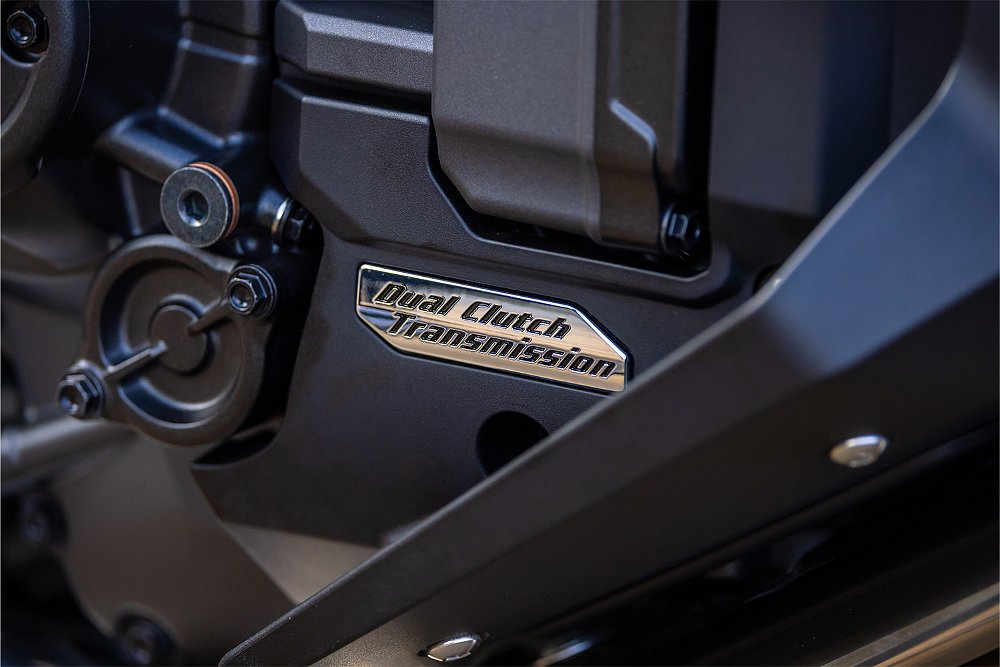
The Drive setting favors efficiency over acceleration, with upshifts occurring under 2,500 rpm and in rapid succession. Just as easy on the engine are the downshifts, which the DCT performs as low as 1,500 rpm. Each level of Sport mode slightly moves the shift points up the rev range, but upshifts rarely happen above 4,000 rpm. That’s a shame because the 1,084 cc p-twin only reaches the fun zone of its powerband around 4,500 rpm.
DCT operates in sharp contrast to my natural shifting pattern, too. If I’m honest, I tend to rev-out an engine. Sometimes, unnecessarily so. On the NT, I climbed a gear closer to 6,000 or 7,000 rpm. Only level-three Sport mode comes close to my riding style, and it still isn’t very close. That’s why I found the first two Sport settings nearly as sluggish as Drive. I regularly wondered, “Why is it shifting to fourth gear at 25 mph? Why is it still in fifth gear through a 30-mph curve? Why am I cruising around town at 38 mph in sixth gear?”
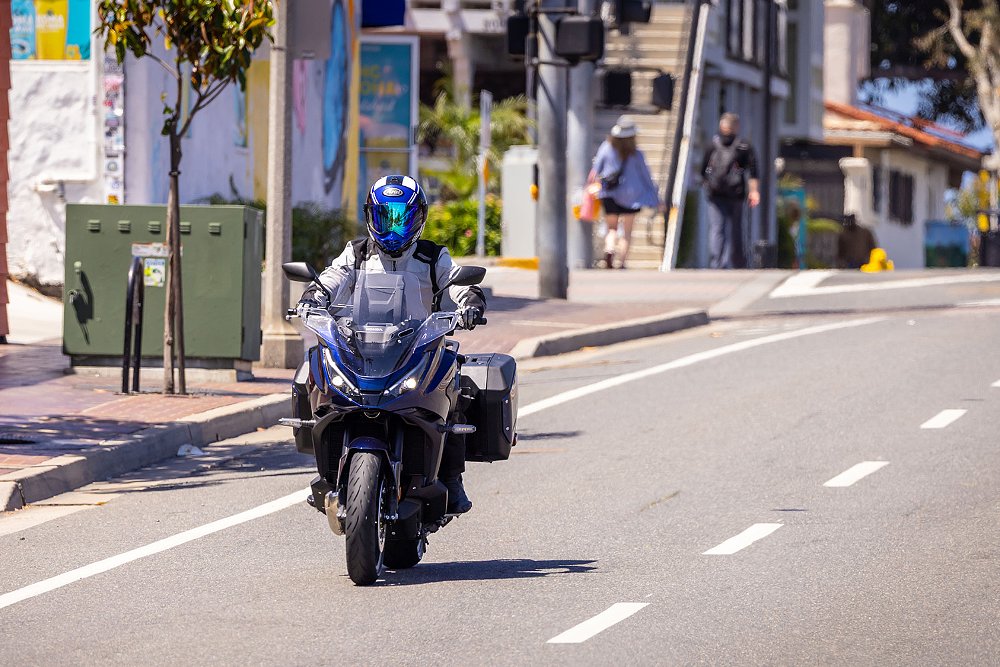
The lax engine speeds may prioritize fuel efficiency and engine longevity, but it also dulls the NT’s roll-on power. That poses problems at highway speeds, where a responsive throttle helps accelerate out of trouble. DCT’s short-shifting habits and late downshifts were just as taxing when hustling up a mountain road. The system wasn’t just late to bang down a gear in the braking zone, it only did so as a response to heavy deceleration. That reactive quality frequently pushed downshifts to the tip-in point, potentially compromising chassis stability. On top of that, DCT rarely downshifted enough gears, killing acceleration at corner exit.
Of course, the beauty of DCT is that users can operate it manually. That’s what I defaulted to much of the time. Without the ability to manipulate the gearbox, I sometimes felt like a passenger on the NT, especially in the aforementioned situations. That was no longer the case in Manual mode. It put me back in control, but more than anything, it put the NT1100’s base package on full display.
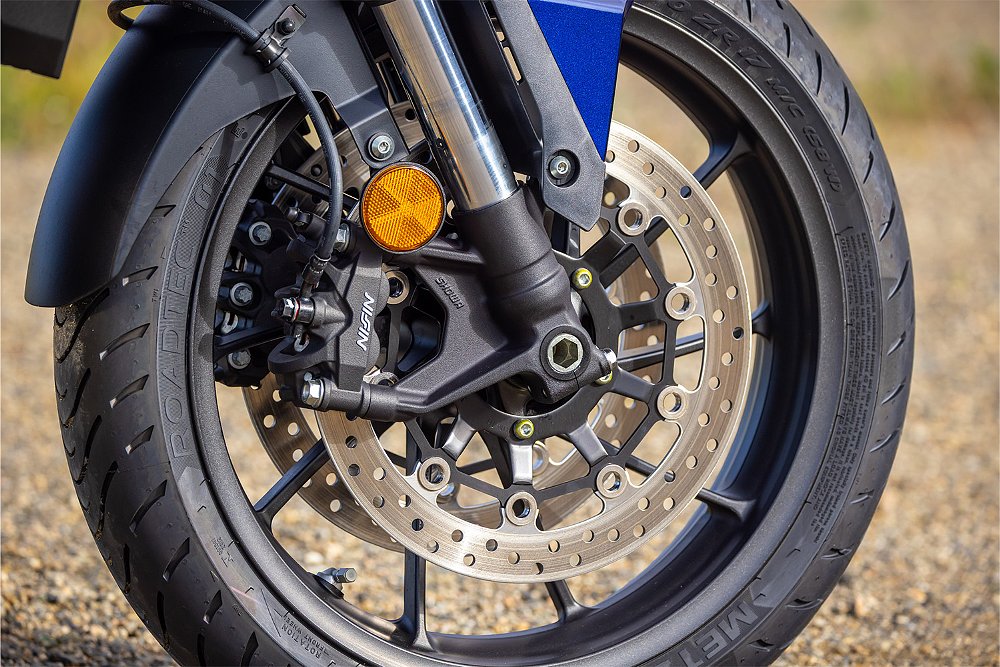
Control freak
Before I go any further, it’s worth reiterating that DCT’s automatic features function the way Honda intended. It’s a system that operates the transmission — and by extension, the engine — in a very conservative manner. I can’t find any fault with it in that respect. By those standards, it performs well. Much of motorcycling is based on preference, and if DCT is your preference, you’ll be satisfied. I simply prefer to control the gearbox myself. Doing so allowed me to extract more performance out of the sport-touring package.
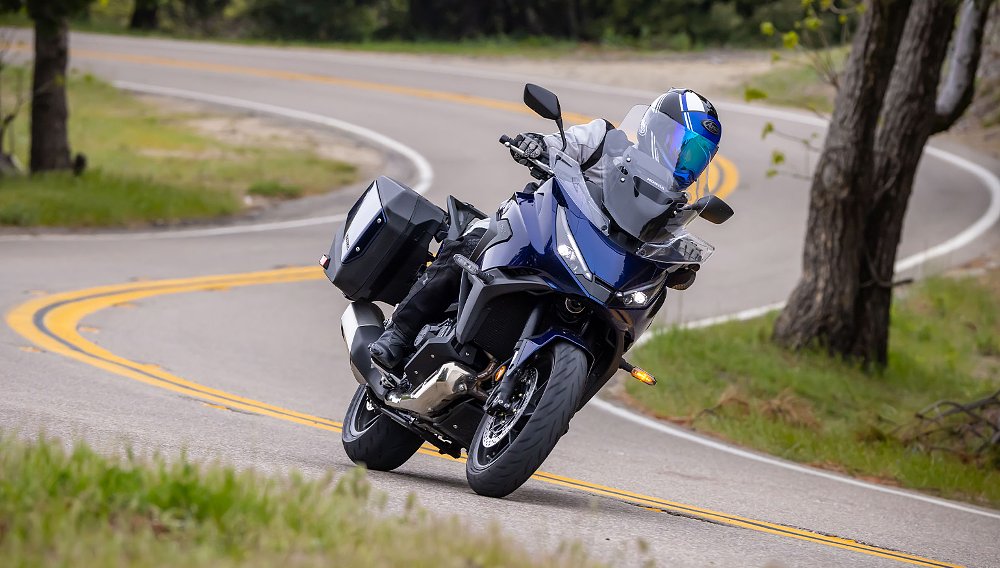
In manual mode, I could cruise on the freeway in fifth gear, not the top gear that DCT favors. I could grab extra downshifts in the braking zone and rev-out the twin on the straights. With the gearbox under my command, everything came together. The engine was maximized. The chassis was more composed. The NT and I achieved a state of flow, especially on a smooth and twisty patch of pavement. The Honda thrives under those conditions, with its light steering and agility belying its 547-pound curb weight.
The only thing that disturbed that harmony of mind, body, and bike were literal bumps in the road. That’s because the poorly damped suspenders struggle to absorb even the slightest undulations at lean. Encountering a dip or bump often sent the NT wiggling or wallowing through the corner. That characteristic was only more disconcerting at peg-scraping pace, which the NT1100 was apt to carry. It’s something rebound and compression damping clickers could easily iron out, but the Showa fork and shock are only preload-adjustable. Adding a few turns of preload to the front and rear helped to some degree, but it also sacrificed some comfort in the process.
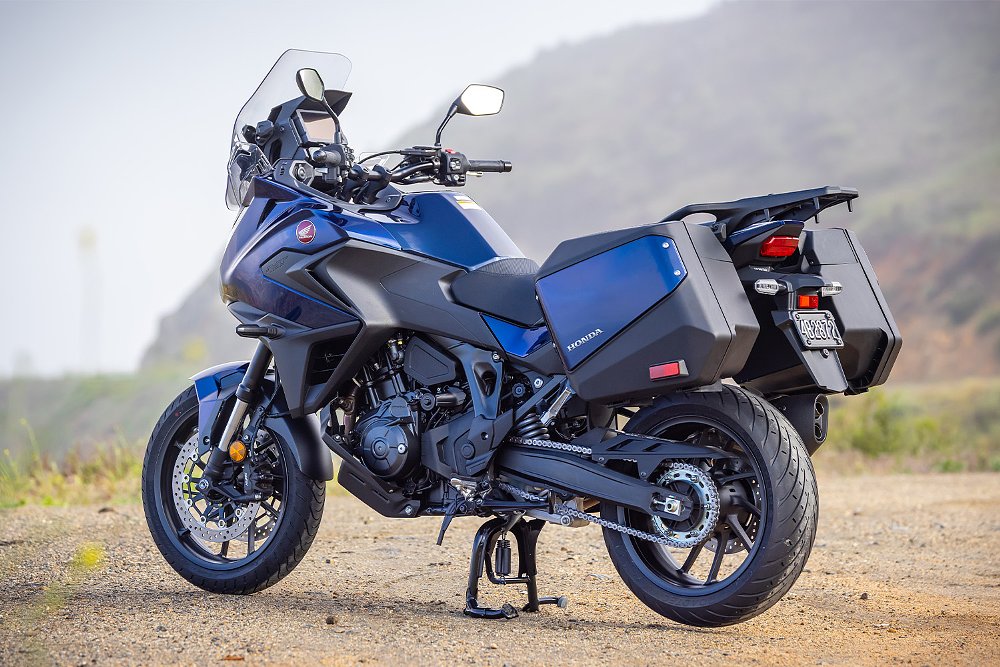
Therein lies the crux of the NT1100. It offers a glut of choices in some areas and a dearth of choice in others. It boasts premium features like IMU-based rider aids, ride modes, multi-level transmission settings, and Apple CarPlay/Android Auto integration, but it opts for budget suspension. It’s like a basketball team that shoots the lights out but commits 20 turnovers a game. It’s difficult to appreciate excellence when the fundamentals aren’t there. That’s something I hope Honda gets back to in future iterations: the fundamentals.
Other options?
If I could build my perfect NT1100, I’d keep its time-tested twin, relaxed ergos, advanced rider aids, and touchscreen TFT. I’d toss stiffer springs in the fork and simplify the UI, but most importantly, I’d equip it with a manual transmission. Such an NT may not be in the cards for 2025, but I’m hopeful Honda has other trims in the works. After all, Big Red already offers a manual transmission variant in the states with its NT1100 Police model. (Well, there goes another police bike I'd like to get my hands on.)
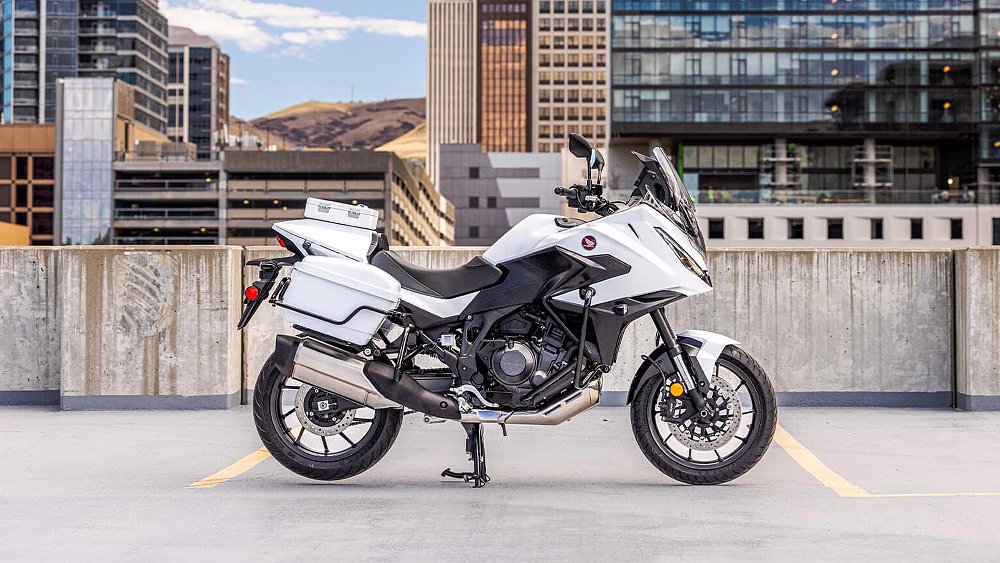
If the 2025 NT1100 DCT proves anything, it’s that Honda’s new sport-tourer is a worthy platform. Starting at just $11,899, the model has few rivals. As a colleague astutely observed, it costs “less than a KTM dirt bike.” The NT1100 isn’t without its faults, but I expect Honda to to further develop the line in the years to come. For now, I’m just happy the sport-tourer finally made its way to the states.
| 2025 Honda NT1100 DCT | |
|---|---|
| Price (MSRP) | $13,258 (as tested); $11,899 (base) |
| Engine |
1,084 cc, liquid-cooled, eight-valve, parallel twin
|
|
Transmission, final drive |
Six-speed automatic dual-clutch transmission, chain |
| Claimed horsepower | N/A |
| Claimed torque | N/A |
| Frame |
Steel semi-double-cradle frame
|
| Front suspension | Showa 43 mm fork, adjustable for spring preload; 5.9 inches of travel |
| Rear suspension |
Showa single shock, adjustable for spring preload; 5.9 inches of travel
|
| Front brake | Dual Nissin four-piston calipers, 310 mm discs, ABS |
| Rear brake | Single-piston caliper, 256 mm disc, ABS |
| Rake, trail | 26.5 degrees, 4.3 inches |
| Wheelbase | 60.4 inches |
| Seat height | 32.3 inches |
| Fuel capacity |
5.4 gallons
|
| Tires | Dunlop Sportmax GPR-300 or Metzeler Roadtec 01, 120/70R17 front, 180/55R17 rear |
| Claimed weight | 547 pounds |
| Available | Now |
| Warranty | 12 months |
| More info | powersports.honda.com |










